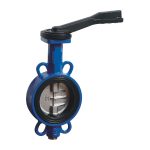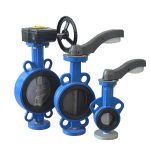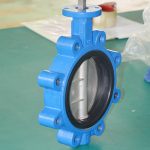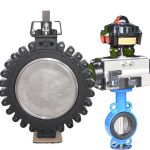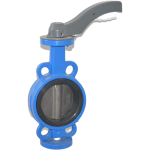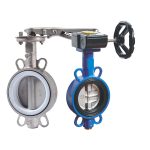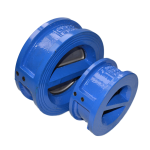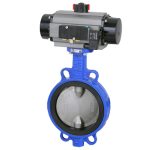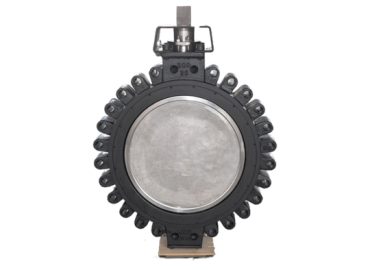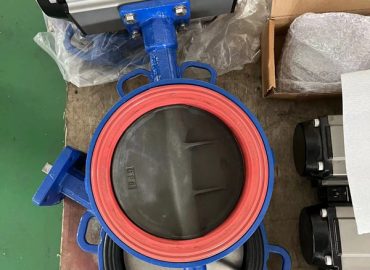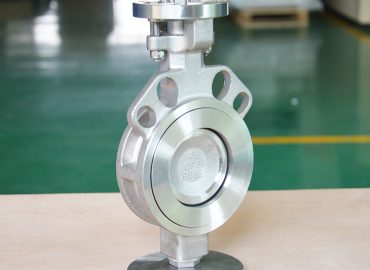When it comes to the successful installation and operation of wafer type butterfly valves, paying close attention to key considerations is crucial. These versatile and efficient valves play a vital role in controlling the flow of fluids in various industrial and commercial applications, making proper installation paramount for optimal performance and longevity. This blog post will delve into the essential factors to consider during the installation process, including proper valve selection, pre-installation inspection, pipeline preparation, gasket selection, valve orientation, actuator installation, and post-installation testing. By carefully addressing each step, you can ensure your wafer type butterfly valve operates smoothly, requires minimal maintenance, and serves its intended purpose effectively.
Introduction
The installation process of wafer type butterfly valves requires careful consideration of several key factors to ensure optimal performance, longevity, and minimal maintenance. Firstly, it’s crucial to select the appropriate valve material, size, and pressure rating based on the specific application and environment. This step involves evaluating compatibility with the pipeline system and other equipment. Before installation, it’s essential to inspect the valve for any visible damages or defects and verify that all necessary parts are in good condition. The location of the valve within the pipeline system is another critical aspect, taking into account factors such as flow direction, accessibility for maintenance, and potential interference with other equipment. Preparing the pipeline by cleaning it thoroughly and inspecting it for any irregularities that may affect the valve installation is also vital. Afterward, selecting the right gasket material based on application requirements and ensuring its proper installation for a secure seal between the valve and pipeline flanges is of utmost importance. Proper valve orientation and alignment within the pipeline system contribute to optimal flow control and performance. Moreover, the selection of an appropriate actuator type, its correct installation, and calibration are essential for accurate valve control. Lastly, post-installation testing and inspection, including leak testing and verifying the smooth operation of the valve, help confirm that the installation has been successful. By diligently addressing each of these key considerations, you can ensure that your wafer type butterfly valve installation is executed correctly, leading to improved efficiency, reduced maintenance, and extended service life.
Brief overview of wafer type butterfly valves and their applications
Wafer type butterfly valve are a popular and versatile flow control solution used across a wide range of industries and applications. They consist of a circular disc mounted on a rotating shaft, which is positioned within the pipeline system. By rotating the disc, the valve can either fully open, partially open, or close the flow path, allowing precise control over fluid flow. The unique design of wafer type butterfly valves offers several advantages, including a compact size, lightweight construction, and ease of installation, making them ideal for space-constrained environments. Moreover, they provide excellent sealing capabilities and low-pressure drop characteristics, contributing to their efficiency. These valves find use in numerous applications, such as water and wastewater treatment, chemical processing, food and beverage production, HVAC systems, and oil and gas industries. With their ability to handle various media types, ranging from liquids and gases to semi-solids and corrosive substances, wafer type butterfly valves have become an essential component in many industrial and commercial processes.
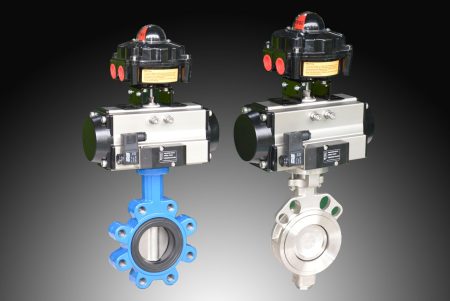
Importance of proper installation to ensure optimal performance and longevity
The importance of proper installation of wafer butterfly valve cannot be overstated, as it directly impacts their performance, efficiency, and longevity. A well-executed installation ensures that the valve operates smoothly and accurately, providing precise flow control and minimizing the risk of leakage or malfunction. On the other hand, improper installation can lead to various issues, such as misalignment, poor sealing, and increased wear and tear, ultimately compromising the valve’s effectiveness and reducing its service life. Furthermore, inadequate installation may result in increased maintenance costs and potential downtime, affecting the overall productivity and cost-efficiency of the system. Therefore, it is essential to follow best practices and guidelines during the installation process, taking into account factors like valve selection, pipeline preparation, gasket installation, and post-installation testing. By doing so, you can ensure that your wafer type butterfly valve functions optimally, requires minimal maintenance, and offers a reliable and durable flow control solution for your application.
Proper Valve Selection
Proper valve selection is a critical aspect of the wafer type butterfly valve installation process, as it greatly influences the performance, reliability, and longevity of the valve within the intended application. To select the most suitable valve, several factors need to be considered. Firstly, the material of the valve should be chosen based on the specific application and environment in which it will be used. Common materials include stainless steel, cast iron, and PVC, each offering unique benefits and limitations depending on factors such as corrosion resistance, temperature range, and pressure handling capabilities. Secondly, selecting the appropriate valve size is crucial to ensure compatibility with the pipeline system and maintain efficient fluid flow. The valve size should be matched to the pipeline diameter and designed to handle the required flow rates without causing excessive pressure drop or turbulence. Another essential factor to consider is the pressure rating of the valve, which indicates its ability to withstand the maximum operating pressure of the system. It is vital to choose a valve with a pressure rating that meets or exceeds the expected system pressure to prevent potential failure or damage. Additionally, it’s important to consider the compatibility of the valve with the pipeline system, other equipment, and the specific media being handled. This may involve assessing the valve’s resistance to chemical attack, its suitability for high-temperature applications, and its ability to handle abrasive or viscous fluids. By carefully evaluating these factors and consulting with experienced professionals, you can select the ideal wafer type butterfly valve for your application, ensuring optimal performance, reduced maintenance, and an extended service life.
Choosing the right valve material (e.g., stainless steel, cast iron, PVC) based on application and environment
Choosing the right valve material for wafer type butterfly valves is an essential step in ensuring optimal performance, durability, and compatibility with the specific application and environment. Stainless steel valves offer excellent corrosion resistance, making them suitable for use in chemical processing, food and beverage, and pharmaceutical industries where exposure to corrosive substances is common. These valves also have high-temperature capabilities, making them ideal for applications involving steam or hot fluids. Cast iron valves, on the other hand, provide a cost-effective option with good strength and durability. They are often used in water and wastewater treatment, as well as general utility services where corrosion resistance is not a primary concern. PVC valves are lightweight and highly resistant to chemical attack, making them ideal for applications involving corrosive media, such as acids and alkalis. They are commonly used in chemical processing, water treatment, and irrigation systems. However, PVC valves have lower temperature and pressure capabilities compared to their metal counterparts, which should be considered when selecting the most suitable material for your application. In summary, carefully evaluating the specific requirements of your application, the environmental conditions, and the properties of each valve material will help you make an informed decision and ensure the successful operation of your wafer type butterfly valve.
Selecting the appropriate valve size and pressure rating
Selecting the appropriate valve size and pressure rating for wafer type butterfly valves is crucial to ensure optimal performance, compatibility with the pipeline system, and efficient fluid flow control. The valve size should be matched to the pipeline diameter to maintain a consistent flow path, avoiding excessive pressure drop or turbulence that could negatively impact system efficiency. Accurate sizing also helps to prevent potential issues such as cavitation or noise generation within the pipeline system. To determine the suitable size, consider factors such as flow rates, operating conditions, and the desired level of flow control. The pressure rating of the valve is another critical aspect to consider, as it indicates the maximum operating pressure that the valve can safely withstand. It’s essential to choose a valve with a pressure rating that meets or exceeds the expected system pressure to avoid potential failure, leakage, or damage. Taking into account factors like temperature fluctuations, pressure spikes, and safety margins will help ensure that the selected valve can handle the demanding conditions of the application. By carefully evaluating and selecting the appropriate valve size and pressure rating, you can optimize the performance, reliability, and longevity of your wafer type butterfly valve, contributing to the overall success of your fluid handling system.

Considering the compatibility with the pipeline system and other equipment
Considering the compatibility of wafer type butterfly valves with the pipeline system and other equipment is a vital aspect of the selection process, as it directly impacts the efficiency, reliability, and safety of the entire fluid handling operation. Ensuring compatibility involves evaluating various factors, including valve size, material, pressure rating, and connection type, to guarantee seamless integration with the existing infrastructure. The valve should be compatible with the pipeline material to avoid issues such as galvanic corrosion or chemical reactions that could compromise the integrity of the system. Additionally, it’s essential to consider the valve’s ability to handle the specific media being used, taking into account factors like temperature, viscosity, abrasiveness, and corrosiveness. Compatibility with other equipment in the system, such as pumps, actuators, and sensors, should also be assessed to ensure proper communication, control, and coordination between components. Furthermore, it’s crucial to consider the available space, access for maintenance, and potential interference with other equipment when selecting the valve and planning its installation. By thoroughly evaluating these factors and ensuring compatibility, you can optimize the performance of your wafer type butterfly valve and contribute to the overall success and longevity of your pipeline system.
Pre-installation Inspection
Pre-installation inspection is a critical step in the process of installing wafer type butterfly valves, as it helps identify potential issues and ensures that all components are in optimal condition before integration into the pipeline system. This inspection involves several key aspects that need to be thoroughly examined to guarantee a successful installation and smooth operation of the valve. Firstly, it’s essential to check the valve for any visible signs of damage, such as cracks, warping, or corrosion, which could compromise its performance or reliability. Secondly, verify that all components, including the disc, shaft, sealing elements, and fasteners, are present and in good condition. This includes checking for proper lubrication of moving parts and ensuring that all seals and gaskets are free from defects and appropriately sized for the application.
Another crucial aspect of the pre-installation inspection is verifying that the selected valve meets the specifications required for the intended application, including material, size, pressure rating, and compatibility with the pipeline system and media being handled. This may involve reviewing product documentation, such as datasheets and certificates, to confirm compliance with industry standards and regulatory requirements. Additionally, it’s essential to inspect the pipeline system where the valve will be installed, ensuring that it is clean, free from debris, and properly prepared for installation. This includes checking for proper alignment, adequate support, and sufficient space for the valve and any associated equipment, such as actuators or sensors.
During the pre-installation inspection, it’s also important to review the installation procedures and best practices, ensuring that all necessary tools, equipment, and personnel are available and adequately trained to carry out the installation safely and efficiently. This may involve consulting manufacturer guidelines, industry standards, and any site-specific safety protocols. By conducting a thorough pre-installation inspection, you can identify and address any potential issues, ensuring that your wafer type butterfly valve is installed correctly and functions optimally, contributing to the overall success and longevity of your fluid handling system.
Inspecting the valve for any visible damages or defects
Inspecting the wafer type butterfly valve for any visible damages or defects prior to installation is an essential step in ensuring its optimal performance, reliability, and longevity within the pipeline system. This inspection process involves carefully examining the valve’s components, including the disc, shaft, seals, gaskets, and fasteners, for signs of damage such as cracks, warping, corrosion, or wear. Additionally, check the sealing elements for proper fit and integrity, as damaged or ill-fitting seals can lead to leakage or reduced flow control. Moving parts should be assessed for appropriate lubrication, smooth operation, and freedom from binding or excessive play. By thoroughly inspecting the valve for any visible damages or defects, potential issues can be identified and addressed before installation, reducing the risk of failure, downtime, or costly maintenance. This proactive approach helps to ensure that the wafer type butterfly valve operates efficiently and reliably, contributing to the overall success and longevity of the fluid handling system.
Ensuring that all necessary parts and components are included and in good condition
Ensuring that all necessary parts and components of the wafer type butterfly valve are included and in good condition prior to installation is crucial for the successful operation and longevity of the valve within the pipeline system. This verification process involves checking the completeness of the valve assembly, including essential components such as the disc, shaft, sealing elements, gaskets, and fasteners. Each component should be carefully inspected for any signs of damage, wear, or manufacturing defects that could compromise its functionality or the integrity of the valve. Additionally, it’s important to verify that all seals and gaskets are of the correct size and material for the intended application, providing an adequate seal and ensuring compatibility with the media being handled. Proper lubrication of moving parts should also be assessed to guarantee smooth operation and minimize friction-related wear. By diligently confirming the inclusion and good condition of all necessary parts and components, you help ensure the efficient, reliable performance of the wafer type butterfly valve, reducing the risk of failure and minimizing maintenance requirements throughout its service life.
Verifying that the valve is compatible with the pipeline system and meets the requirements of the project
Verifying that the wafer type butterfly valve is compatible with the pipeline system and meets the requirements of the project is a critical aspect of the valve selection and installation process. This compatibility assessment involves evaluating various factors, such as valve material, size, pressure rating, and connection type, to ensure seamless integration with the existing infrastructure and suitability for the intended application. The valve should be compatible with the pipeline material to prevent issues like galvanic corrosion or adverse chemical reactions that could compromise the integrity of the system. Furthermore, the valve must be capable of handling the specific media being used, taking into account factors like temperature, viscosity, abrasiveness, and corrosiveness. It’s essential to ensure that the valve is of the appropriate size and pressure rating to maintain efficient fluid flow control and withstand the expected system pressure without leakage or failure. Additionally, the valve should be compatible with other equipment in the system, such as pumps, actuators, and sensors, for proper communication and coordinated operation. By thoroughly verifying the valve’s compatibility with the pipeline system and ensuring it meets the project requirements, you can optimize the performance, reliability, and longevity of the wafer type butterfly valve, contributing to the overall success and efficiency of your fluid handling system.
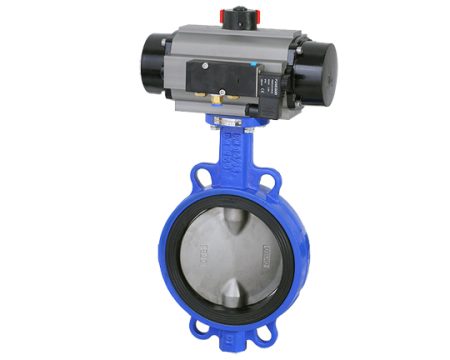
Installation Location
The installation location of a wafer type butterfly valve plays a significant role in determining its performance, accessibility, and overall efficiency within the pipeline system. Selecting an appropriate installation location involves considering several factors to ensure that the valve can function optimally and be easily maintained throughout its service life. Firstly, it’s essential to evaluate the available space, taking into account the dimensions of the valve, any associated equipment such as actuators or sensors, and the required clearance for maintenance and operation. Adequate space should be provided to enable easy access for inspection, adjustment, and repair without causing interference with other equipment or components in the system.
Another critical factor to consider is the orientation of the valve relative to the pipeline and the direction of fluid flow. The valve should be installed in a position that facilitates efficient flow control and minimizes potential issues such as cavitation, turbulence, or pressure drop. This may involve considering the upstream and downstream piping configurations, as well as the presence of any bends, elbows, or junctions that could impact fluid dynamics. Additionally, the installation location should provide sufficient support for the valve and its associated equipment, ensuring stability and minimizing stress on the pipeline and other components.
Environmental factors, such as temperature, humidity, and potential exposure to corrosive or abrasive substances, should also be taken into account when selecting the installation location. These factors can influence the performance and longevity of the valve, as well as the overall integrity of the pipeline system. It’s essential to choose a location that provides adequate protection from potentially damaging environmental conditions while still allowing for proper operation and maintenance access.
Furthermore, the installation location should comply with any relevant industry standards, regulatory requirements, and safety protocols, ensuring that the valve operates safely and efficiently within the context of the specific application. By carefully evaluating these factors and selecting the appropriate installation location for your wafer type butterfly valve, you can optimize its performance, reliability, and ease of maintenance, contributing to the overall success and longevity of your fluid handling system.
Determining the best location for the valve within the pipeline system
Determining the best location for a wafer type butterfly valve within the pipeline system is crucial for optimizing its performance, reliability, and ease of maintenance. This decision involves considering various factors, such as fluid dynamics, accessibility, and environmental conditions, to ensure seamless integration and efficient operation. Firstly, evaluate the upstream and downstream piping configurations, taking into account bends, elbows, or junctions that could impact flow control and pressure management. The valve should be positioned to minimize issues like cavitation, turbulence, or pressure drop, while facilitating efficient flow regulation. Secondly, ensure that the chosen location provides adequate space and clearance for the valve, any associated equipment such as actuators or sensors, and necessary maintenance access. This allows for easy inspection, adjustment, and repair without causing interference with other components in the system. Additionally, consider environmental factors like temperature, humidity, and potential exposure to corrosive or abrasive substances, selecting a location that offers optimal protection while still allowing proper operation and maintenance. Lastly, adhere to relevant industry standards, regulatory requirements, and safety protocols when determining the valve’s position within the pipeline system. By carefully considering these factors and selecting the best location for your wafer type butterfly valve, you can maximize its performance, longevity, and overall contribution to the success and efficiency of your fluid handling system.
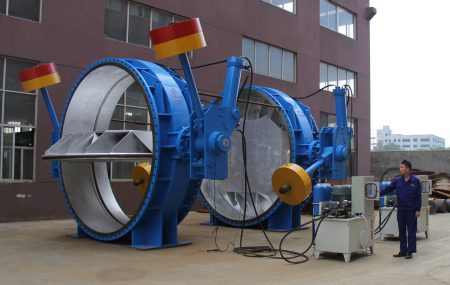
Taking into account factors like flow direction, accessibility for maintenance, and potential interference with other equipment
When installing a wafer type butterfly valve in a pipeline system, it is vital to take into account factors like flow direction, accessibility for maintenance, and potential interference with other equipment. These considerations are crucial for optimizing the valve’s performance, reliability, and ease of maintenance. Flow direction plays a significant role in determining the valve’s effectiveness in regulating fluid flow and pressure management. Proper orientation of the valve in accordance with the flow direction ensures smooth operation and minimizes issues like turbulence or cavitation. Accessibility for maintenance is another essential factor, as it allows for convenient inspection, adjustment, and repair of the valve without causing disruption to the overall system. Adequate space and clearance should be provided around the valve and any associated equipment, such as actuators or sensors, to facilitate easy access for maintenance tasks. Lastly, potential interference with other equipment should be carefully evaluated to prevent conflicts or complications within the pipeline system. The valve should be positioned in a way that does not obstruct or hinder the operation of adjacent components, ensuring seamless integration and coordinated functioning of the entire fluid handling system. By thoroughly considering these factors during the installation process, you can maximize the performance, longevity, and overall contribution of your wafer type butterfly valve to the success and efficiency of your pipeline system.
Ensuring adequate space for proper installation and operation of the valve
Ensuring adequate space for proper installation and operation of the wafer type butterfly valve is critical for optimizing its performance, reliability, and longevity within the pipeline system. Adequate space not only facilitates smooth functioning of the valve but also allows for convenient access during maintenance and inspection tasks. When selecting an installation location, consider the dimensions of the valve, any associated equipment such as actuators or sensors, and the necessary clearance required for operation and maintenance activities. Providing sufficient space around the valve helps prevent interference with other components in the system, allowing them to function efficiently without hindrance. Moreover, it ensures that the valve can be easily accessed for routine inspection, adjustment, and repair, minimizing downtime and contributing to the overall success and efficiency of the fluid handling system. By carefully planning and providing adequate space for the installation and operation of your wafer type butterfly valve, you can maximize its performance, enhance its reliability, and extend its service life, ultimately benefiting the entire pipeline system.
Pipeline Preparation
Pipeline preparation is a crucial step in ensuring the successful installation and operation of a wafer type butterfly valve within a fluid handling system. Proper preparation not only ensures optimal performance and reliability of the valve but also contributes to the overall efficiency and longevity of the pipeline system. To begin with, it’s essential to thoroughly clean and inspect the pipeline to identify any debris, foreign materials, or damage that could interfere with the valve’s functioning or compromise its sealing capabilities. This may involve flushing the pipeline, using appropriate cleaning agents, and visually inspecting the interior surfaces for any signs of corrosion, wear, or other irregularities.
Next, verify the alignment and compatibility of the pipeline components, confirming that the dimensions, material, and connection type of the valve match the requirements of the pipeline system. This step helps ensure seamless integration of the valve into the pipeline and prevents potential issues such as leaks, pressure drop, or improper flow control. Additionally, consider the environmental conditions and the media being transported through the pipeline, selecting the appropriate valve material, gaskets, and seals to ensure compatibility and resistance to corrosion, abrasion, or other damaging factors.
It’s also important to assess the pipeline’s support structure and ensure that it can adequately bear the weight and stress of the valve, its associated equipment, and the fluid flow. Proper support minimizes strain on the pipeline and valve components, reducing the risk of failure or damage over time. Furthermore, evaluate the pipeline’s layout and identify the optimal location for the valve installation, taking into account factors like flow direction, accessibility for maintenance, and potential interference with other equipment. This step helps optimize the valve’s performance, ease of maintenance, and overall contribution to the efficiency of the fluid handling system.
Lastly, adhere to relevant industry standards, regulatory requirements, and safety protocols during the pipeline preparation process. This includes following proper installation procedures, using suitable personal protective equipment, and performing necessary tests and inspections before commissioning the pipeline system. By diligently preparing the pipeline for the installation of a wafer type butterfly valve, you can maximize its performance, reliability, and service life, ultimately contributing to the success and efficiency of your fluid handling system.
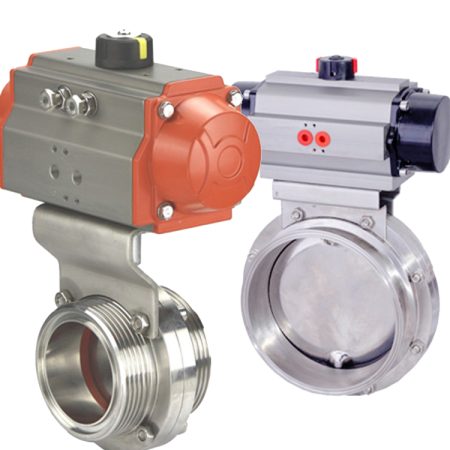
Cleaning the pipeline to remove debris, dirt, and foreign materials
Cleaning the pipeline to remove debris, dirt, and foreign materials is a vital step in ensuring the successful installation and operation of a wafer type butterfly valve within a fluid handling system. Proper cleaning not only prevents potential blockages or flow restrictions but also helps maintain the integrity and efficiency of the valve and other components within the pipeline. This process may involve flushing the pipeline with appropriate cleaning agents or using specialized equipment such as brushes or pigs to dislodge and remove accumulated debris from the interior surfaces. A thorough visual inspection should follow to identify any signs of remaining contaminants, corrosion, or damage that could interfere with the valve’s sealing capabilities or compromise its performance. By meticulously cleaning the pipeline before installing the butterfly valve, you can optimize its functionality, minimize the risk of leakage or failure, and contribute to the overall success and efficiency of your fluid handling system.
Inspecting the pipeline for any damages or irregularities that may affect the valve installation
Inspecting the pipeline for any damages or irregularities before installing a wafer type butterfly valve is an essential step in ensuring the successful integration and operation of the valve within the fluid handling system. A thorough inspection helps identify potential issues, such as corrosion, cracks, or misalignments, that could compromise the valve’s sealing capabilities, performance, or lifespan. By detecting and addressing these problems prior to installation, you can prevent issues like leaks, pressure drop, or improper flow control that may arise from an inadequate pipeline condition. The inspection process should involve a visual examination of the pipeline’s interior and exterior surfaces, paying close attention to connection points, welds, and areas susceptible to damage or wear. Additionally, non-destructive testing methods, such as ultrasonic or radiographic testing, can be employed to assess the pipeline’s structural integrity and ensure its compatibility with the valve. By diligently inspecting the pipeline and addressing any damages or irregularities before installing the butterfly valve, you can optimize its performance, enhance its reliability, and extend its service life, ultimately benefiting the entire pipeline system.
Aligning the flanges and ensuring they are properly spaced and parallel
Aligning the flanges and ensuring they are properly spaced and parallel is a critical step in the successful installation of a wafer type butterfly valve within a fluid handling system. Proper flange alignment not only facilitates seamless integration of the valve into the pipeline but also helps maintain its sealing capabilities, performance, and longevity. Misaligned or improperly spaced flanges can lead to issues such as leaks, increased stress on the valve components, or even damage to the valve itself. To achieve proper alignment, it’s essential to carefully measure the distance between the flanges and verify that they are parallel to each other, creating an even and uniform space for the valve to be inserted. The use of appropriate tools, such as straightedges, levels, or laser alignment devices, can aid in achieving accurate alignment and ensuring optimal valve seating. Additionally, it’s crucial to confirm that the flange surfaces are clean, free from debris or irregularities, and compatible with the valve’s gasket material to ensure a secure and leak-free seal. By meticulously aligning the flanges and maintaining proper spacing and parallelism, you can optimize the performance, reliability, and service life of your wafer type butterfly valve, contributing to the overall success and efficiency of your fluid handling system.
Gasket Selection and Installation
Gasket selection and installation play a crucial role in the successful integration and operation of a wafer type butterfly valve within a fluid handling system. The gasket serves as a sealing element, ensuring a leak-free connection between the valve and the pipeline flanges while also helping to maintain the valve’s performance and longevity. Selecting the appropriate gasket material is essential for achieving a reliable seal, as it must be compatible with the media being transported through the pipeline, as well as the environmental conditions, temperature, and pressure levels within the system.
When choosing a gasket, consider factors such as chemical resistance, temperature tolerance, and compressibility, which can significantly impact the gasket’s ability to create a secure seal and withstand the demands of the specific application. Common gasket materials include elastomers like EPDM, NBR, or Viton, as well as non-metallic materials like PTFE or graphite, each offering unique properties suited to different operating conditions and media types.
Proper installation of the gasket is equally important, as improper placement or alignment can compromise the seal and lead to leaks or reduced valve performance. To ensure correct installation, clean the flange surfaces thoroughly to remove any debris, dirt, or irregularities that could interfere with the gasket’s sealing capabilities. Next, position the gasket evenly between the flanges, ensuring that it aligns with the bolt holes and covers the entire sealing surface. When inserting the wafer type butterfly valve between the flanges, make sure that the valve’s seating area is in full contact with the gasket to create a uniform seal.
During the bolting process, apply even and controlled torque to the flange bolts, following a crisscross pattern to ensure uniform compression of the gasket. Over-tightening or uneven tightening can cause the gasket to extrude or become damaged, compromising its sealing capabilities. It’s essential to follow the manufacturer’s recommendations for torque values and tightening sequences to achieve the best results.
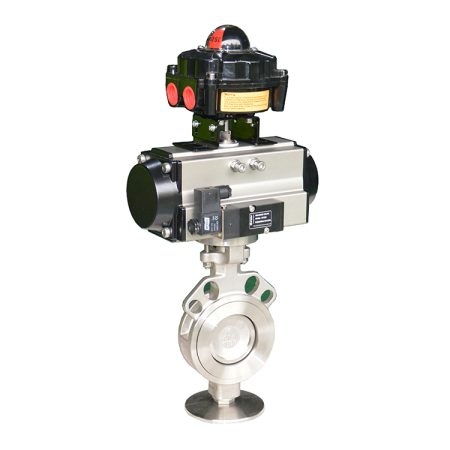
By carefully selecting and installing the appropriate gasket for your wafer type butterfly valve, you can optimize its performance, enhance its reliability, and extend its service life, ultimately contributing to the overall success and efficiency of your fluid handling system.
Choosing the right gasket material based on application, temperature, and pressure requirements
Choosing the right gasket material based on application, temperature, and pressure requirements is essential for ensuring the successful performance and longevity of a wafer type butterfly valve within a fluid handling system. The appropriate gasket material helps create a secure, leak-free seal between the valve and the pipeline flanges while withstanding the demands of the specific application. Factors to consider when selecting a gasket material include chemical resistance, temperature tolerance, and compressibility, as these properties significantly impact the gasket’s ability to maintain a reliable seal and endure the operating conditions of the system. Common gasket materials such as elastomers (EPDM, NBR, or Viton) and non-metallic materials (PTFE or graphite) offer unique properties tailored to different media types and environmental conditions. By carefully evaluating the application, temperature, and pressure requirements of your fluid handling system and selecting the appropriate gasket material accordingly, you can optimize the performance, reliability, and service life of your wafer type butterfly valve, ultimately contributing to the overall success and efficiency of the system.
Properly installing the gasket to ensure a secure seal between the valve and pipeline flanges
Properly installing the gasket is crucial to ensure a secure seal between the wafer type butterfly valve and the pipeline flanges, ultimately contributing to the valve’s performance, reliability, and service life. To achieve a successful installation, start by thoroughly cleaning the flange surfaces to remove any debris, dirt, or irregularities that could compromise the gasket’s sealing capabilities. Next, carefully position the gasket evenly between the flanges, ensuring it aligns with the bolt holes and covers the entire sealing surface. When inserting the butterfly valve between the flanges, make certain that the valve’s seating area is in full contact with the gasket, creating a uniform and effective seal. During the bolting process, apply even and controlled torque to the flange bolts, following a crisscross pattern to ensure uniform compression of the gasket. Avoid over-tightening or uneven tightening, as these can cause the gasket to extrude or become damaged, compromising its sealing performance. By adhering to proper gasket installation techniques and following the manufacturer’s recommendations, you can create a secure, leak-free seal that enhances the overall efficiency and success of your fluid handling system.
Checking for leaks after installation and addressing any issues promptly
Checking for leaks after installing a wafer type butterfly valve in a fluid handling system is a critical step to ensure the valve’s performance, reliability, and longevity. Identifying and addressing any potential issues promptly helps maintain the integrity of the system and prevents complications that could arise from undetected leaks, such as damage to equipment, loss of product, or environmental hazards. To perform a leak check, visually inspect the valve and flange connections for any signs of leakage, paying close attention to gasket and bolt areas. Additionally, consider using pressure testing methods, such as hydrostatic or pneumatic testing, to further verify the integrity of the valve’s seal under operational conditions. If any leaks are detected, troubleshoot the issue by examining the gasket installation, flange alignment, and bolt torque to ensure proper sealing. It may be necessary to replace damaged components or adjust the installation to achieve a secure, leak-free connection. By diligently checking for leaks after valve installation and addressing any issues promptly, you can optimize the performance and efficiency of your fluid handling system while minimizing the risk of unforeseen complications and downtime.
Valve Orientation and Alignment
Valve orientation and alignment play a significant role in the successful installation, operation, and maintenance of a wafer type butterfly valve within a fluid handling system. Proper orientation and alignment ensure optimal performance, reduce stress on the valve components, and contribute to the valve’s overall reliability and service life. When installing the valve, it is essential to consider factors such as flow direction, accessibility for maintenance or actuator operation, and the compatibility of the valve with surrounding piping and equipment.
Firstly, ensure that the valve disc is positioned correctly concerning the flow direction, as indicated by the arrow on the valve body or the manufacturer’s guidelines. Incorrect orientation can lead to reduced flow control efficiency, increased wear on the valve components, and potential damage to the valve itself. Next, align the valve with the pipeline flanges, making sure that the flanges are parallel and properly spaced to accommodate the valve’s dimensions and gasket requirements. Misaligned flanges can result in leaks, uneven stress distribution, or even damage to the valve and pipeline.
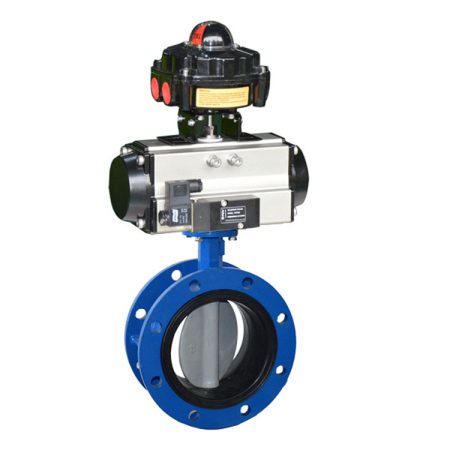
Additionally, when installing the valve, consider the accessibility and ease of operation for any attached actuators or manual operators. Proper orientation ensures that sufficient clearance is available for the actuator or operator to function without obstruction and enables easy access for routine maintenance or adjustments. It is also crucial to confirm that the valve’s installation does not interfere with other pipeline components, such as supports, hangers, or adjacent equipment, which could impact the system’s overall functionality and safety.
In summary, careful attention to valve orientation and alignment during installation is vital to optimizing the performance, reliability, and longevity of a wafer type butterfly valve in a fluid handling system. By considering factors such as flow direction, flange alignment, accessibility, and compatibility with surrounding infrastructure, you can ensure the valve operates efficiently and effectively while minimizing potential issues and maximizing the valve’s service life.
Installing the valve with the correct orientation for optimal flow control and performance
Installing a wafer type butterfly valve with the correct orientation is essential for achieving optimal flow control and performance within a fluid handling system. Proper orientation ensures that the valve operates efficiently, reduces wear on its components, and contributes to its overall reliability and service life. To achieve the correct orientation, follow the manufacturer’s guidelines or the flow direction arrow indicated on the valve body. This ensures that the valve disc is positioned correctly concerning the flow of the media, allowing for precise flow regulation and minimizing turbulence or pressure loss. Additionally, consider the accessibility and ease of operation for any attached actuators or manual operators, ensuring sufficient clearance is available for them to function without obstruction. By carefully installing the valve with the appropriate orientation, you can optimize its performance, enhance its reliability, and extend its service life, ultimately contributing to the overall success and efficiency of your fluid handling system.
Ensuring proper alignment of the valve within the pipeline system
Ensuring proper alignment of a wafer type butterfly valve within the pipeline system is crucial for optimal performance, reliability, and service life. Proper alignment helps maintain a secure seal between the valve and pipeline flanges while reducing stress on the valve components. To achieve correct alignment, first, ensure that the flanges are parallel and properly spaced to accommodate the valve’s dimensions and gasket requirements. Misaligned flanges can result in leaks, uneven stress distribution, or even damage to the valve and pipeline. Additionally, confirm that the valve’s installation does not interfere with other pipeline components, such as supports, hangers, or adjacent equipment, which could impact the system’s overall functionality and safety. By diligently aligning the valve within the pipeline system, you can optimize its performance, prevent potential issues, and maximize its service life, ultimately contributing to the success and efficiency of your fluid handling system.
Confirming that the valve operates smoothly and without obstruction
Confirming that the wafer type butterfly valve operates smoothly and without obstruction is an essential step in ensuring optimal performance, reliability, and service life within a fluid handling system. A smooth-operating valve allows for precise flow control and minimizes the risk of damage to the valve components or surrounding infrastructure. To verify the valve’s operation, first, ensure that the valve disc moves freely within its full range of motion, from fully open to fully closed, without encountering any resistance or obstructions. This can be achieved by manually operating the valve or, if applicable, using the attached actuator. Additionally, inspect the valve installation for potential interferences with other pipeline components or adjacent equipment, and confirm that sufficient clearance is available for the valve’s operation. By diligently confirming that the valve operates smoothly and without obstruction, you can optimize its performance, enhance its reliability, and extend its service life, ultimately contributing to the overall success and efficiency of your fluid handling system.
Actuator Installation and Setup
Actuator installation and setup are crucial aspects of achieving optimal performance, reliability, and service life for a wafer type butterfly valve within a fluid handling system. Actuators, whether electric, pneumatic, or hydraulic, provide the means to control the valve’s operation, enabling precise flow regulation and remote control capabilities. Proper installation and setup of the actuator ensure smooth valve operation, reduced wear on components, and overall system efficiency.
To begin the actuator installation process, consult the manufacturer’s guidelines or technical documentation for the specific actuator model and valve it is intended to operate. This ensures compatibility and adherence to proper mounting procedures. Carefully align the actuator’s mounting points with those on the valve, ensuring a secure and stable connection. If a mounting bracket or adapter is required, install it per the manufacturer’s instructions, ensuring proper alignment and fit between the actuator and valve.
Once the actuator is securely mounted, connect any required power sources, control signals, or pneumatic or hydraulic lines following the manufacturer’s recommendations and applicable safety standards. Ensure that all connections are tight and leak-free, and verify that the actuator receives the appropriate power supply or pressure levels for optimal operation.
Next, calibrate and set up the actuator to ensure proper valve operation. This typically involves adjusting the actuator’s open and closed position limits to match the valve’s full range of motion and setting any control parameters or feedback mechanisms, such as position sensors or limit switches. It is essential to confirm that the actuator’s operation is synchronized with the valve’s movement, opening and closing the valve as expected without causing excessive force or wear on the components.
Finally, test the actuator’s operation by cycling the valve through its full range of motion, from fully open to fully closed, using the actuator’s controls. Observe the valve’s movement to ensure smooth, unobstructed operation, and verify that the actuator responds correctly to control signals or commands.
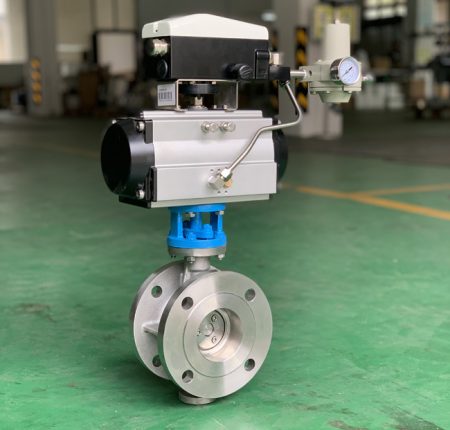
In summary, proper actuator installation and setup are vital for optimizing the performance, reliability, and service life of a wafer type butterfly valve in a fluid handling system. By carefully mounting the actuator, connecting power and control sources, calibrating its operation, and testing its functionality, you can ensure efficient and precise flow control while minimizing potential issues and maximizing the valve’s service life.
Selecting the appropriate actuator type (manual, electric, pneumatic, hydraulic) for the specific application
Selecting the appropriate actuator type for a wafer type butterfly valve is essential for achieving optimal performance, reliability, and efficiency within a fluid handling system. The choice of manual, electric actuator, pneumatic actuator, or hydraulic actuators depends on the specific application requirements, available resources, and operational constraints. Manual actuators, such as handwheels or levers, are suitable for smaller systems or applications where infrequent valve adjustments are required and direct operator access is feasible. Electric actuators offer precise control and remote operation capabilities, making them an ideal choice for larger systems or those requiring frequent valve adjustments, provided that a stable electrical power source is available. Pneumatic actuators, which use compressed air to operate the valve, are known for their fast response times and high force output, making them suitable for applications requiring rapid valve actuation or where hazardous environments necessitate the use of non-sparking equipment. Hydraulic actuators, powered by pressurized fluid, provide high force and precise control, making them well-suited for heavy-duty applications or those involving high-pressure media. By carefully considering factors such as control requirements, power source availability, response time, and environmental conditions, you can select the most appropriate actuator type for your specific application, ensuring optimal valve performance and overall system efficiency.
Properly installing and connecting the actuator to the valve
Properly installing and connecting the actuator to a wafer type butterfly valve is a crucial step in ensuring optimal performance, reliability, and efficiency within a fluid handling system. A well-installed actuator allows for precise flow control and smooth valve operation, reducing wear on components and facilitating system maintenance. To install and connect the actuator, first consult the manufacturer’s guidelines or technical documentation to ensure compatibility between the actuator and the valve. Carefully align the actuator’s mounting points with those on the valve, securing a stable and firm connection. If a mounting bracket or adapter is required, follow the manufacturer’s instructions for installation, ensuring proper alignment and fit. Once the actuator is securely mounted, connect any required power sources, control signals, or pneumatic or hydraulic lines according to the manufacturer’s recommendations and applicable safety standards. Ensure that all connections are tight and leak-free, and verify that the actuator receives the appropriate power supply or pressure levels for optimal operation. By diligently installing and connecting the actuator to the valve, you can optimize its performance, enhance its reliability, and extend its service life, ultimately contributing to the overall success and efficiency of your fluid handling system.
Setting up and calibrating the actuator for accurate valve control
Setting up and calibrating the actuator for accurate valve control is a critical step in ensuring optimal performance, reliability, and efficiency within a fluid handling system. Proper calibration of the actuator ensures that it operates in synchrony with the wafer type butterfly valve, allowing for precise flow regulation and minimizing wear on components. To set up and calibrate the actuator, first consult the manufacturer’s guidelines or technical documentation for the specific actuator model and follow the recommended procedures. Adjust the actuator’s open and closed position limits to match the valve’s full range of motion, ensuring that the valve operates within its design parameters without over- or under-travel. Configure any control parameters or feedback mechanisms, such as position sensors, limit switches, or modulating controls, to ensure accurate valve positioning and response to control signals. Test the actuator’s operation by cycling the valve through its full range of motion, from fully open to fully closed, using the actuator’s controls or an external control system. Observe the valve’s movement to confirm smooth, unobstructed operation and verify that the actuator responds correctly to control signals or commands. By carefully setting up and calibrating the actuator, you can achieve accurate valve control, optimize the valve’s performance, and enhance the overall efficiency and reliability of your fluid handling system.
Post-installation Testing and Inspection
Post-installation testing and inspection are vital steps in ensuring optimal performance, reliability, and service life for a wafer type butterfly valve within a fluid handling system. These processes help identify and address any potential issues that may arise during installation, such as misalignment, improper connections, or actuator calibration errors, ultimately contributing to the overall success and efficiency of the system. To conduct a thorough post-installation testing and inspection, first visually inspect the valve and actuator assembly for correct alignment, secure mounting, and proper connections. Check for any signs of damage or wear on the components, and verify that the valve is installed in the correct orientation according to the manufacturer’s guidelines.
Next, test the valve’s operation by cycling it through its full range of motion, from fully open to fully closed, using the actuator’s controls or an external control system. Observe the valve’s movement to ensure smooth, unobstructed operation, and confirm that the actuator responds correctly to control signals or commands. If any issues are detected, make the necessary adjustments or repairs before proceeding with further testing.
Once the valve’s operation has been verified, perform a pressure test to confirm the integrity of the valve’s seal and the pipeline connections. This typically involves pressurizing the system to a specific level, as recommended by the manufacturer or applicable industry standards, and monitoring for any leaks or pressure drops. If a leak is detected, re-check the valve’s alignment, gasket installation, and flange connections, making any necessary adjustments or repairs to achieve a secure seal.
Finally, inspect the surrounding pipeline system and adjacent equipment for proper installation, alignment, and support. Ensure that the valve’s operation does not interfere with other components, and verify that sufficient clearance is available for maintenance and future inspections.
In summary, conducting a comprehensive post-installation testing and inspection of a wafer type butterfly valve is essential for optimizing its performance, reliability, and service life within a fluid handling system. By diligently inspecting the valve’s alignment, connections, operation, and sealing performance, you can identify and address potential issues before they escalate, ensuring the long-term success and efficiency of your system.
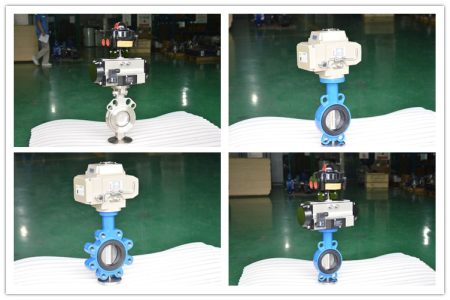
Performing leak testing to ensure proper sealing and performance
Performing leak testing on a wafer type butterfly valve is a crucial step in ensuring proper sealing and performance within a fluid handling system. Leak testing helps identify any potential issues with the valve’s seal, gaskets, or pipeline connections, allowing for timely adjustments or repairs to maintain the system’s efficiency and reliability. To conduct a leak test, first pressurize the system to a specific level, as recommended by the manufacturer or applicable industry standards. Monitor the valve and its surrounding connections for any signs of leakage, paying close attention to areas such as the valve’s disc, seat, and flange connections. If a leak is detected, re-check the valve’s alignment, gasket installation, and flange connections, making any necessary adjustments or repairs to achieve a secure seal. Additionally, verify that the valve’s disc and seat are free from debris or damage that could compromise the sealing performance. By diligently performing leak testing on a wafer type butterfly valve, you can ensure proper sealing and performance, thereby optimizing the overall efficiency and reliability of your fluid handling system.
Inspecting the valve for any signs of damage or improper installation
Inspecting a wafer type butterfly valve for any signs of damage or improper installation is an essential step in maintaining the efficiency and reliability of a fluid handling system. A thorough inspection helps identify potential issues early on, allowing for timely adjustments or repairs to prevent more significant problems down the line. To perform a comprehensive valve inspection, first visually examine the valve’s external components, such as the disc, stem, and flange connections, for any signs of damage, wear, or corrosion. Ensure that the valve is installed in the correct orientation according to the manufacturer’s guidelines, with proper alignment and support within the pipeline system.
Next, check the valve’s internal components, such as the seat and sealing surfaces, for any signs of damage or debris that could compromise sealing performance. Verify that the gaskets and seals are correctly installed and in good condition, ensuring a secure seal between the valve and pipeline connections.
Additionally, inspect the actuator’s mounting and connections, confirming that it is securely attached to the valve and properly aligned. Ensure that all power sources, control signals, and pneumatic or hydraulic lines are connected as per the manufacturer’s recommendations and applicable safety standards.
Finally, observe the valve’s operation during normal system conditions, paying close attention to its movement, response to control signals, and any unusual noises or vibrations. If any issues are detected, consult the manufacturer’s guidelines or seek professional assistance to make the necessary adjustments or repairs.
By regularly inspecting the wafer type butterfly valve for any signs of damage or improper installation, you can proactively address potential issues and maintain the overall efficiency and reliability of your fluid handling system.
Verifying that the valve operates smoothly and efficiently
Verifying that a wafer type butterfly valve operates smoothly and efficiently is an essential aspect of maintaining the performance, reliability, and longevity of a fluid handling system. Ensuring smooth operation helps prevent wear and tear on the valve’s components, reduces the risk of system failures, and enhances overall efficiency. To verify the valve’s operation, first observe its movement as it cycles through its full range of motion, from fully open to fully closed, using the actuator’s controls or an external control system. Pay close attention to the valve’s disc and stem, ensuring that they move freely without any signs of binding, misalignment, or excessive friction.
Additionally, monitor the valve’s response to control signals or commands, confirming that it reacts promptly and accurately to achieve the desired flow regulation. If the valve is equipped with feedback mechanisms, such as position sensors or limit switches, ensure that they are correctly calibrated and functioning as intended.
Inspect the valve’s sealing surfaces and seat for any signs of damage, wear, or debris that could compromise sealing performance and efficiency. Confirm that the valve’s gaskets and seals are properly installed and in good condition, providing a secure seal between the valve and pipeline connections.
Lastly, listen for any unusual noises or vibrations during the valve’s operation, which could indicate potential issues with the valve’s components, actuator, or surrounding pipeline system. If any problems are detected, consult the manufacturer’s guidelines or seek professional assistance to make the necessary adjustments or repairs.
By thoroughly verifying that a wafer type butterfly valve operates smoothly and efficiently, you can optimize the valve’s performance, enhance its reliability, and extend its service life, ultimately contributing to the overall success and efficiency of your fluid handling system.

Conclusion
In conclusion, the proper installation and maintenance of a wafer type butterfly valve play a critical role in the overall performance, reliability, and efficiency of a fluid handling system. By paying close attention to the various aspects of valve installation and operation, you can optimize the valve’s performance and extend its service life, ultimately contributing to the success and efficiency of your system. Here are the key considerations to keep in mind when installing and maintaining a wafer type butterfly valve:
- Compatibility: Ensure that the valve, actuator, and other components are compatible with each other and suitable for the specific application, including pressure, temperature, and fluid type requirements.
- Correct Orientation: Install the valve in the correct orientation according to the manufacturer’s guidelines, ensuring proper alignment and support within the pipeline system.
- Actuator Installation and Calibration: Properly install and calibrate the actuator to ensure accurate valve control and smooth operation. Follow the manufacturer’s instructions and recommendations for mounting, connection, and calibration procedures.
- Leak Testing: Perform leak testing to confirm the integrity of the valve’s seal and pipeline connections. Address any leaks by re-checking alignment, gasket installation, and flange connections, making any necessary adjustments or repairs to achieve a secure seal.
- Post-installation Inspection and Testing: Conduct a comprehensive post-installation inspection and testing to verify the valve’s operation, alignment, connections, and sealing performance. Make any necessary adjustments or repairs based on the findings of these tests.
- Routine Maintenance and Inspection: Regularly inspect the valve for any signs of damage, wear, or improper installation. Monitor its operation during normal system conditions and address any issues promptly to maintain the overall efficiency and reliability of the fluid handling system.
- System Integration: Ensure that the valve’s operation does not interfere with other components in the pipeline system, and verify that sufficient clearance is available for maintenance and future inspections.
By carefully considering these key factors when installing and maintaining a wafer type butterfly valve, you can ensure optimal performance, reliability, and service life for your fluid handling system. Remember to consult the manufacturer’s guidelines or seek professional assistance if you encounter any issues during installation or operation. With proper care and attention, a well-installed and maintained wafer type butterfly valve can significantly enhance the efficiency and success of your fluid handling system.
Importance of carefully considering each step in the wafer type butterfly valve installation process
The importance of carefully considering each step in the wafer type butterfly valve installation process cannot be overstated, as it directly impacts the overall performance, reliability, and efficiency of a fluid handling system. Meticulous attention to detail during installation ensures proper alignment, secure connections, and accurate actuator calibration, ultimately contributing to smooth valve operation and effective flow regulation. Furthermore, a well-executed installation process minimizes the risk of leaks, wear, and damage to the valve’s components, prolonging its service life and reducing maintenance costs. By diligently following the manufacturer’s guidelines and best practices throughout the installation process, you can optimize the performance of your wafer type butterfly valve and enhance the overall success and efficiency of your fluid handling system.

Proper installation ensures optimal performance, reduced maintenance, and extended service life
Proper installation of a wafer type butterfly valve is crucial in ensuring optimal performance, reduced maintenance, and extended service life within a fluid handling system. When the valve is installed correctly, it operates smoothly and efficiently, providing accurate flow regulation and minimizing wear on its components. This not only enhances the overall efficiency of the system, but also decreases the likelihood of malfunctions or failures that can lead to costly downtime and repairs. Moreover, a well-installed valve maintains its sealing integrity, reducing the risk of leaks and associated damage to the surrounding equipment. By adhering to the manufacturer’s guidelines and best practices during the installation process, you can maximize the performance and longevity of your wafer type butterfly valve, ultimately contributing to the success and reliability of your fluid handling system.
Consulting with experienced professionals for guidance and support in valve installation projects
Consulting with experienced professionals for guidance and support in valve installation projects is a wise decision, as it can significantly enhance the success and efficiency of your fluid handling system. Expertise in wafer type butterfly valve installation ensures that the process follows best practices, adheres to manufacturer guidelines, and complies with applicable industry standards. Professionals can provide valuable insights into proper alignment, connections, actuator calibration, and troubleshooting potential issues, ensuring optimal valve performance and reliability. Additionally, their knowledge of maintenance procedures and recommendations can help prolong the service life of your valve and reduce overall maintenance costs. By seeking the assistance of experienced professionals, you can be confident that your wafer type butterfly valve installation project will be executed correctly, maximizing the performance and longevity of your fluid handling system.



